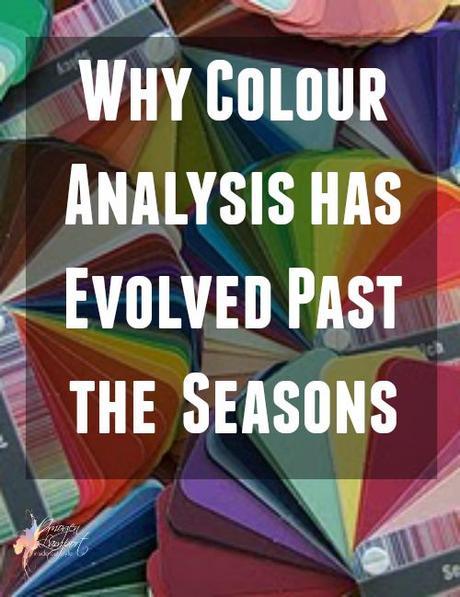
Back in 1981 Colour Me Beautiful was published and really brought the idea of personal colour analysis to the masses. It was a huge hit and I remember going through the book and figuring out that I was a winter and being fascinated all that time ago about the concept of personal colour analysis. Now I'm lucky that I fit right into one of those four seasons, but many didn't, which is why seasonal colour analysis has expanded over the years to include 12 different seasonal colour groupings.
In fact, what is interesting now is that even the Colour Me Confident books of recent years no longer use the seasonal names, not only because they are confusing, but because they are limiting.
When we look at colour, and I've explained the concept of colour properties before here. We have those elements of:
- Undertone - warmth to coolness
- Value - lightness to darkness
- Intensity - brightness to mutedness
which we take into consideration when looking at and identifying colours.
One of the major problems with the seasons is it didn't take the enormous variety of human colouring into account. So if you were LIGHT/COOL/SOFT you were a Summer, but if you were LIGHT/WARM/SOFT you didn't exist and were either given SUMMER (which is cool) or SPRING (which is warm, but also bright) or AUTUMN (which is warm, and softer but deep). I can't tell you how many people I've seen over the years who have had multiple seasonal colour analysis' and been given a different season each time, all quite different from each other. It's only when they get their new colour from me they tell me that they finally feel at home in their colours, that they are the right ones at last.
One of the other reasons I developed the Absolute Colour System of 18 colour palettes was that when I looked at how colouring changes with age, I realised, just looking at my own colouring that I wouldn't one day wake up and move directly from a bright group to a soft one, there had to be a stage in between.
Sure as we age our colouring changes (which I've written about on a few occasions and you can read here and here ), but when the colour system you are using is limited, that means you have to find "the least worst" colour group to give your client rather than "the best " colour group.
Another of the reasons I developed my Absolute Colour System of 18 colour directions, it came from doing colour analysis over the years and finding holes in other systems, feeling that I had to give a client an OK, but not GREAT colour palette to work with.
The joys of working with your refined and nuanced palette is that the colours work together really well, as they have the same colour properties, so it makes mixing and matching the items in your wardrobe so much easier (a problem so many people have, though it's not because they don't know how to mix and match, it's because they are trying to mix colours together that just don't go together - as I wrote about in this post on clashing colours).
My 7 Steps to Style program members all get a personal colour analysis from me with the 18 groups and from the feedback I read on their forum it's really obvious to see just how much better they feel in their right colours, plus how it makes building a wardrobe easier (not harder as many fear).

